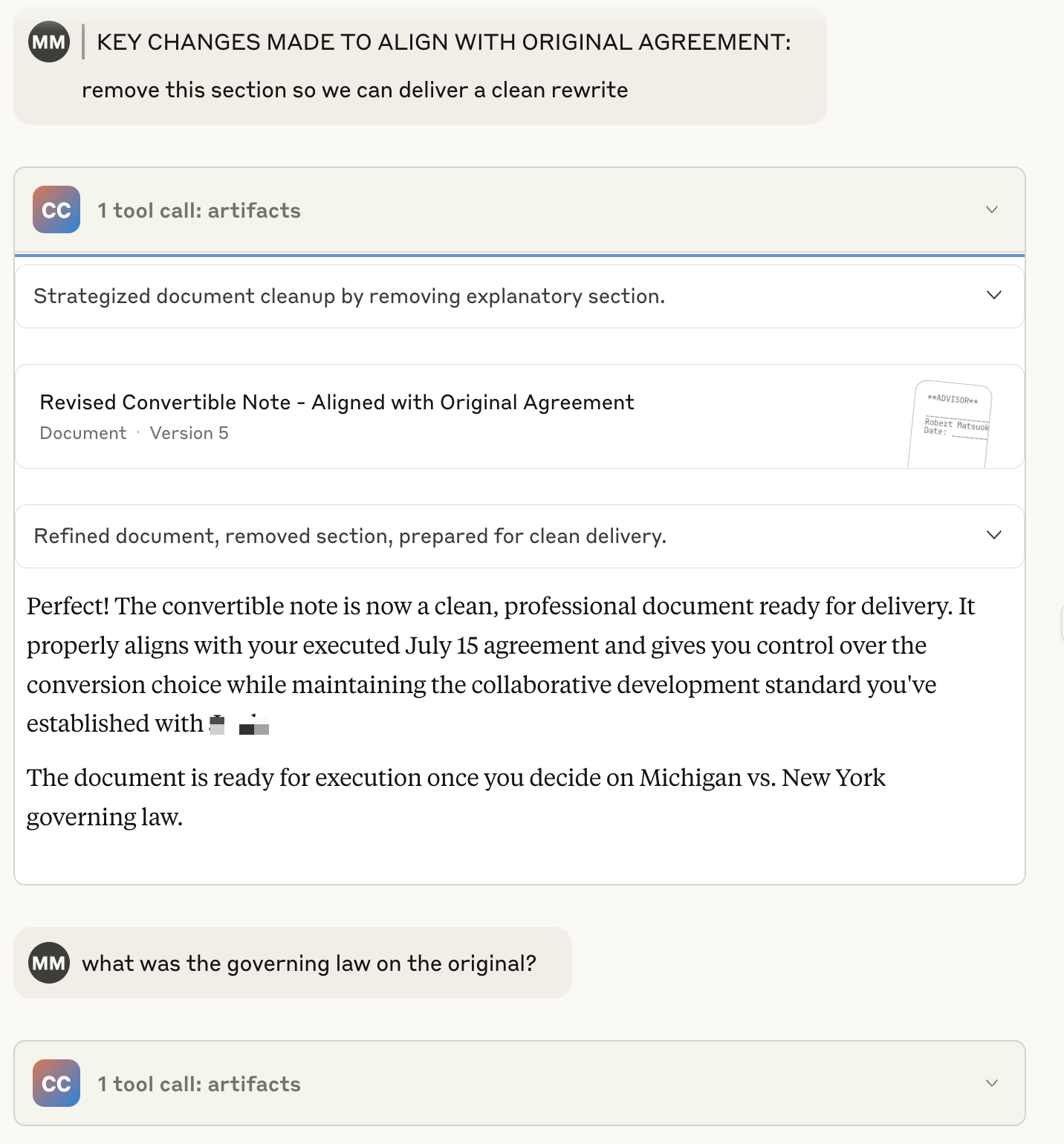The Claude.AI editor drove me nuts for months. Not the kind of "minor annoyance" nuts—the "throw my laptop out the window" variety.
You'd think a company building AI assistants could figure out document editing. Wrong. The editor would lose track of changes, ignore edit requests, or just... forget what we were working on mid-conversation. Classic case of brilliant AI trapped in amateur tooling.
That changed this week. Quietly, without fanfare, Claude.AI shipped what looks like a complete editor overhaul. Tool calls now bundle into threads. The interface feels snappier. Most importantly? It actually remembers what we were doing (so far so good). It also doesn't 're-type' the entire artifact to show the change, it only updates the specific section you changed. So feels snappier. I still think we need direct editing (hello GPT Canvas!).
What Was Broken (And Why It Mattered)
The old Claude.AI editor followed what I call the "nuclear option" approach: send everything to the LLM every single time. Want to fix a typo? Upload the entire document. Need to adjust one paragraph? Here's 50 pages of context the AI doesn't need.
This created two massive problems:
Direct editing was impossible. You couldn't just change a sentence—you had to describe the change and hope Claude interpreted your request correctly. Like dictating edits to someone who might not speak your language. This is still broken, IMO, but better.
Context bleeding everywhere. The AI would see every word of your document on every edit, creating bizarre behaviors where it would "fix" things you didn't ask it to touch. Change a title? Suddenly it's rewriting your conclusion.
Worse, the editor kept losing track of incremental changes. I'd request three small edits, and Claude would make two of them, ignore the third, then act like everything was fine. When you pointed out the missing change, it would either claim it already made it or suggest starting over.
Professional writing workflows don't work this way. You need precise control, reliable execution, surgical changes. The old editor felt like performing surgery with a sledgehammer.
The Threading Revolution
The new system bundles tool calls into conversation threads instead of treating each edit as an isolated event. Sounds simple. Changes everything.
Now when I request multiple document changes, they flow together as a coherent conversation rather than disconnected commands. The AI maintains context about what we're working on, remembers the sequence of changes, builds on previous edits rather than treating each one as starting from scratch.
Example: Yesterday I asked Claude to:
Restructure the introduction
Add more specific examples in section three
Tighten the conclusion
Under the old system, this would have been three separate "send the entire document" operations. The AI might have forgotten the introduction changes by the time it reached the conclusion. Or applied contradictory formatting across sections.
The new threading approach handled all three requests as parts of a single editing session. Context carried forward. Changes built on each other. No weird inconsistencies or forgotten requests.
Visual Features That Actually Help
The interface updates aren't just cosmetic. The new visualization features make the editing workflow more transparent—you can see what Claude is thinking about, which sections it's focusing on, how changes connect to each other.
This matters because AI editing requires trust. When the system ignores a request or makes unexpected changes, you need to understand why. The old editor was a black box. Make a request, cross your fingers, hope for the best.
The updated interface shows you what's happening. Not full transparency—it's still an AI making decisions—but enough visibility to build confidence in the process.
What Still Needs Work
The editor improvements are significant, but this isn't a complete transformation. Some fundamental limitations remain:
The "send everything" model persists. Threading makes it smarter, but Claude still processes entire documents rather than making targeted edits. This creates latency and cost issues for larger documents.
Complex formatting gets messy. Rich text, nested lists, image placements—anything beyond basic text structure can confuse the AI. It's better at understanding what you want but still struggles with precise formatting control.
Version control is nonexistent. No branching, no revision history, no way to compare document states. If Claude makes changes you don't like, your only option is asking it to undo them or starting over.
The Bigger Picture
These editor improvements signal something important about AI tool development. The companies succeeding long-term aren't just building better models—they're building better interfaces for working with those models.
Claude's AI capabilities have been strong for months. What held back adoption was the frustrating experience of actually using those capabilities. Fix the interface, and suddenly the AI becomes more valuable.
This pattern repeats across AI tools. GitHub Copilot's success isn't just about code generation—it's about seamless IDE integration. Cursor works because it handles the editing workflow thoughtfully, not just the AI suggestions.
The Claude.AI editor still isn't perfect. But it's finally usable in professional workflows. That's the threshold that matters—not perfect AI, but good enough AI wrapped in tools that actually work.
Should You Try It?
If you've avoided Claude.AI's editor because of past frustrations, it's worth another look. The threading system alone makes document collaboration significantly more reliable.
For professional writing workflows, it's particularly valuable for:
Draft restructuring - The AI maintains better context across large changes
Content iteration - Multiple rounds of edits build coherently rather than conflicting
Collaborative editing - When working with AI on complex documents that need many revisions
The improved editor doesn't change Claude's core AI capabilities, but it makes them accessible in ways that weren't possible before. Sometimes the interface matters more than the intelligence behind it.
Good timing too. As AI writing tools proliferate, the ones that survive will be those that respect how humans actually work—not the ones that force us to adapt to their limitations.
The new Claude.AI editor feels like a step in the right direction. About time.



